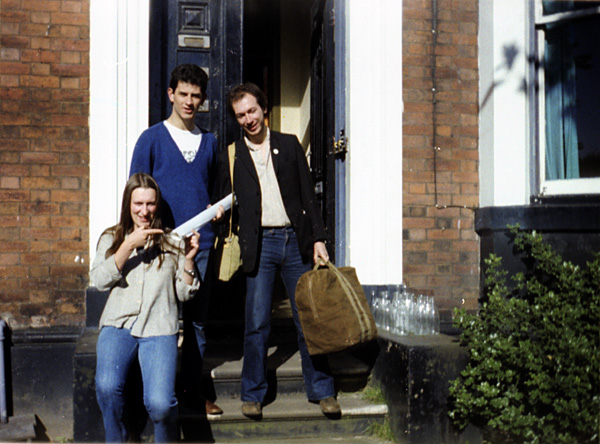How the most mundane of snapshots can catch you unawares.
In the opening paragraph of "Camera Lucida",
Roland Barthes mentions having seen a photograph of Napoleon's brother, Jerome,
taken in 1852. He was amazed to realise that he was "looking at eyes that
have looked at the Emperor". Now, this is not meant literally, but it does
give rise to thoughts about the way that we are prepared to accept a photograph
as being “real” in some sense.
Later, in Chapter 32, he describes photography as proof of
the fact that "the thing has been there"; painting can "feign
reality", and spoken or written language can deceive, but it can always be
said of a photograph: "That Has Been". The nature of the
photographic process means that light from the referent (the original real
object or person) creates its image in the photograph. When the image is
eventually seen by a spectator (by you or I) that light from the referent,
delayed by a period of time, finally reaches the spectator. Barthes describes a
photograph as "literally an emanation of the referent". Again, this light
from the referent is not literally the same light that, passing from the
referent to the film emulsion, caused the original exposure. This idea of
‘deferred light’, finally reaching its eventual audience, is more concerned
with the fact that every photograph is inevitably of the past. However, there
are quantum physicists who might argue that, because one photon is practically
indistinguishable from another, there is no way to prove that the light
emanating from the photograph is not the same as that from the original
exposure.
In the latter part of the book Barthes is discussing a
photograph (referred to as the Wintergarden photograph) of his (recently
deceased) mother as a young girl. We are not shown the photograph, a snapshot,
since Barthes considers that it would appear mundane to anybody but himself,
and thus appear incomprehensible as an example of an important photograph. Yet
in studying the photo, he "rediscovered" his mother in "the
treasury of rays which emanated from my mother as a child, from her hair, her
skin, her dress, her gaze, on that day".
 |
| Lewis Payne, by Alexander Gardner, 1865 |
In chapter 39 there is a photograph, taken by Alexander
Gardner in 1865, of Lewis Payne in his prison cell awaiting execution. Barthes
had the realisation that, in addition to the punctum of 'the detail', there can
be, as in this photograph of Lewis Payne, a punctum 'of Time'. In the
photograph (evidence of "That Has Been") he is alive and well;
however, we are also aware that, at the moment that the photograph was exposed,
he is about to die, and that he is dead (in the here and now), and has been for
many years.
I have recently experienced my own example of what I might
call a Wintergarden moment, or perhaps of time as punctum. While searching
through old negatives and prints for a particular photograph, I came across a
negative which I neither recognised nor remembered. I scanned it, and enlarged
it, and in the picture saw myself (my assumption therefore being that Fiona, my
wife, is behind the camera), with two old friends: Linda Wilkinson, a
long-time-ago nursing colleague of Fiona's, and Andy Bell, an ex-school friend
of mine. Andy and I were at boarding school together; we played in the
obligatory rock and roll band, and we saw one another infrequently, while he
was at University in Sheffield and I was living in Salford. In the photo (from
about 1980), we are all standing on the steps to the door of the house where
Fiona and I had our first flat; Andy is carrying bags, and from memory, was
returning to Sheffield prior to leaving England to take up a job in Zimbabwe.
He died not long after in a car accident while working in Zimbabwe.
The photograph was a shock. I do not remember it being
taken, but there it is ... "That Has Been". And after all these
years, across that great gulf of time and forgetfulness, from that
"treasury of rays", there is Andy Bell. Alive and well, yet about to
die, and yet dead. A revelation.

No comments:
Post a Comment